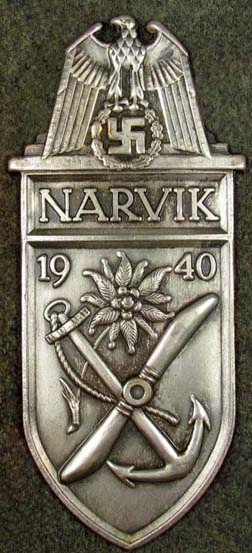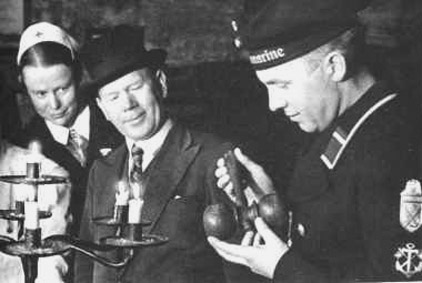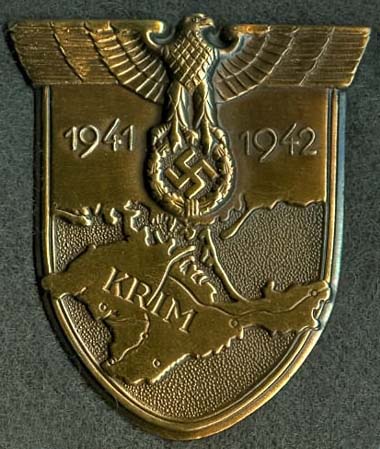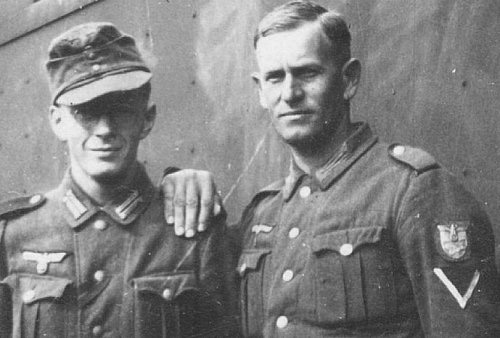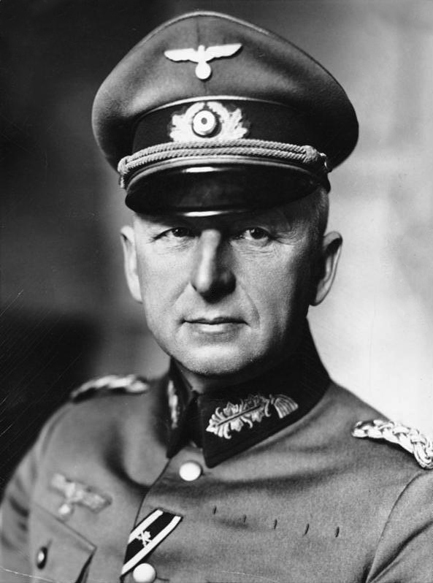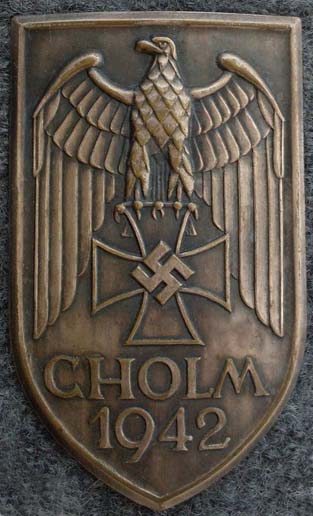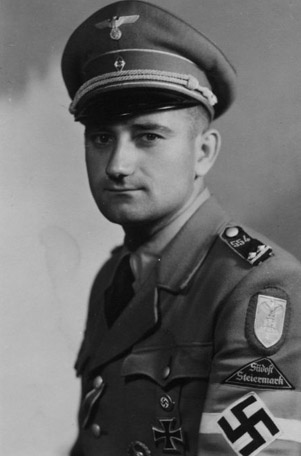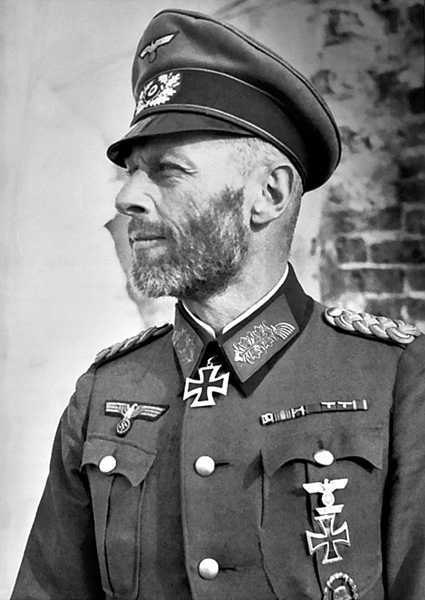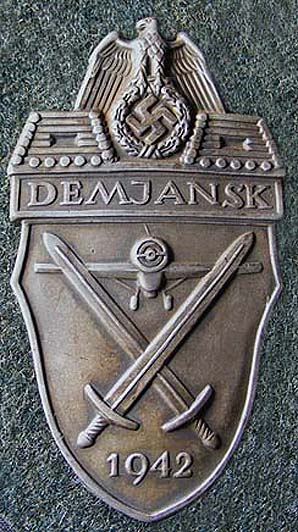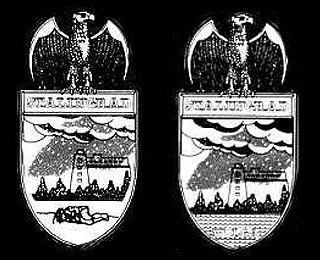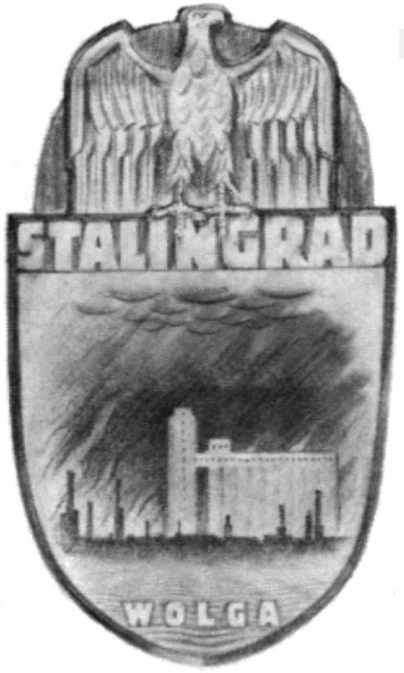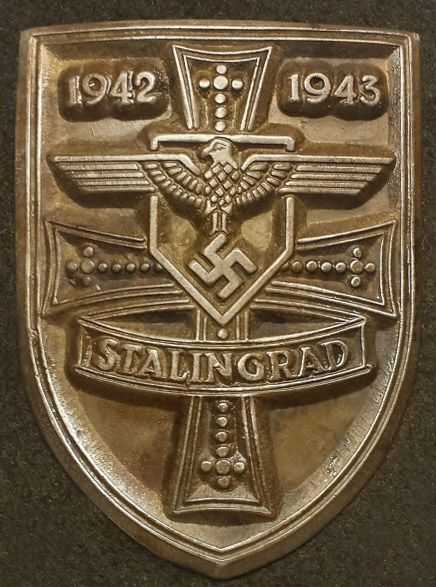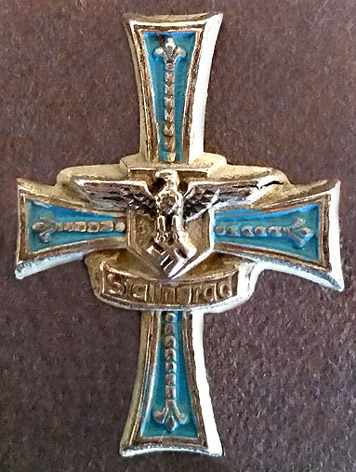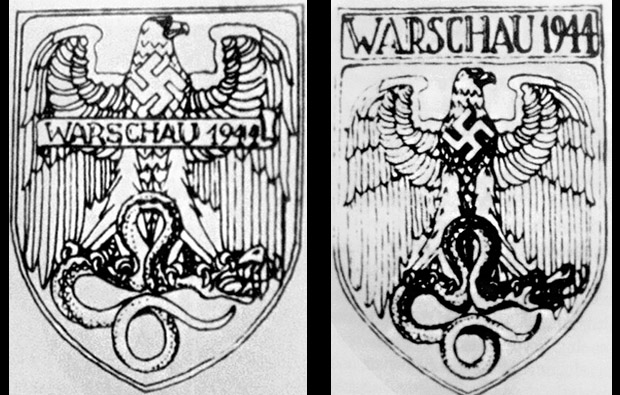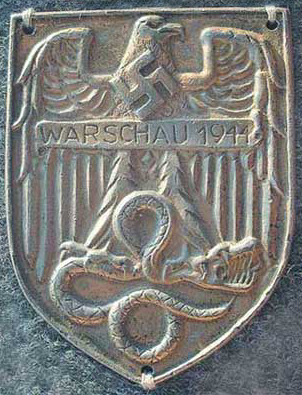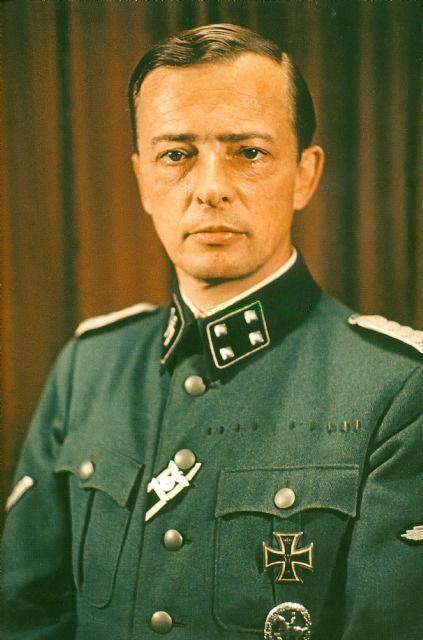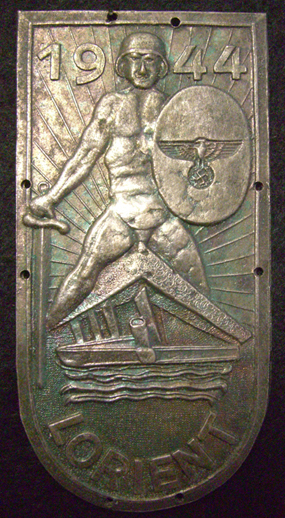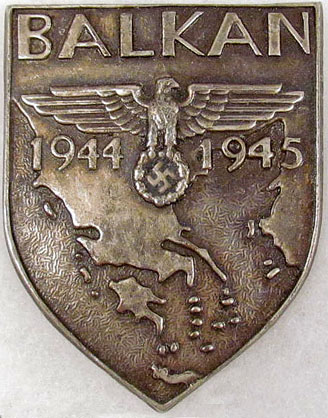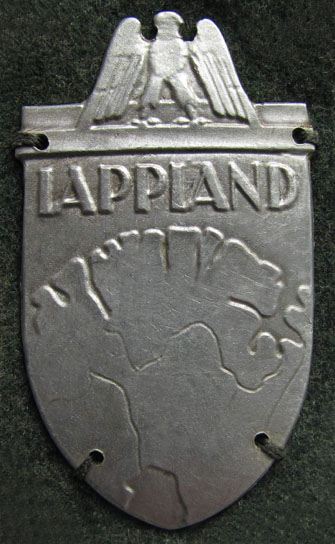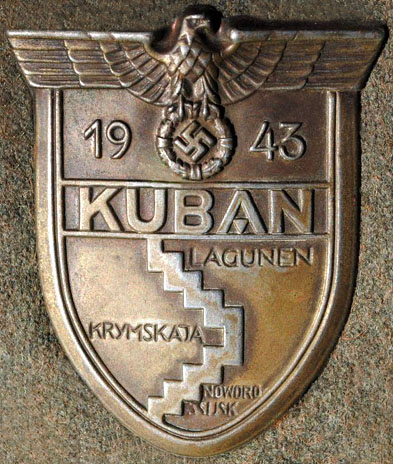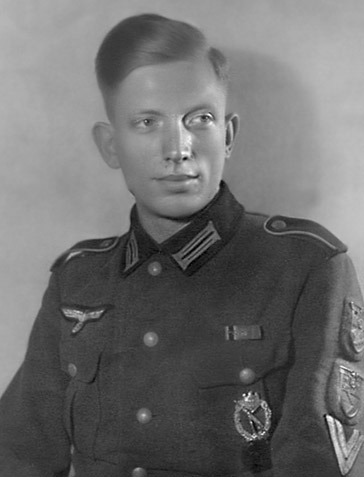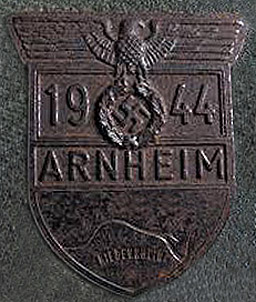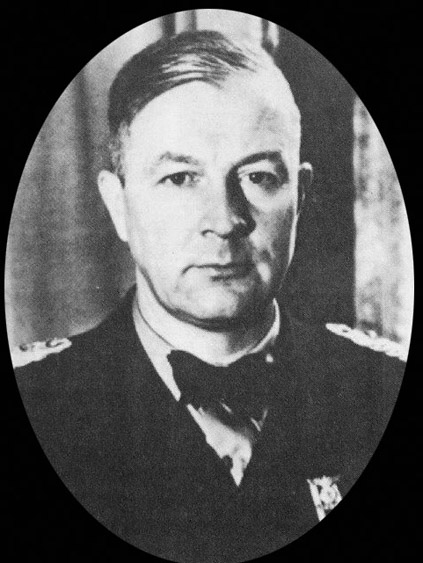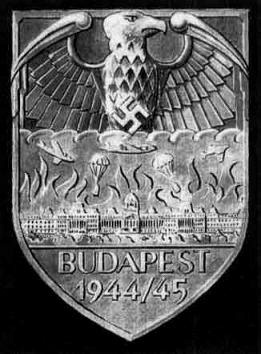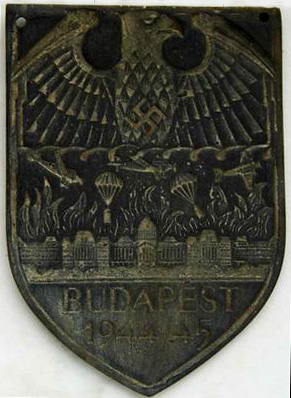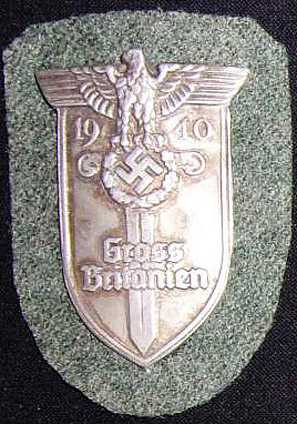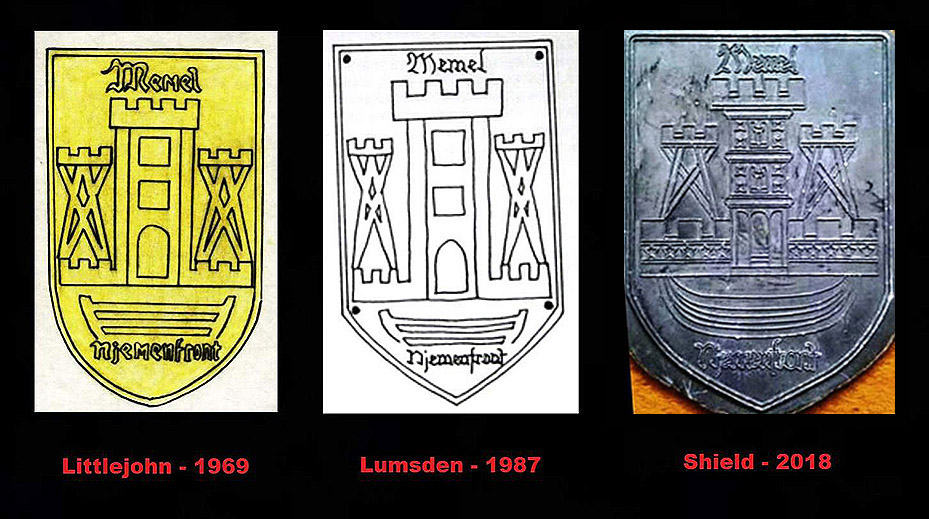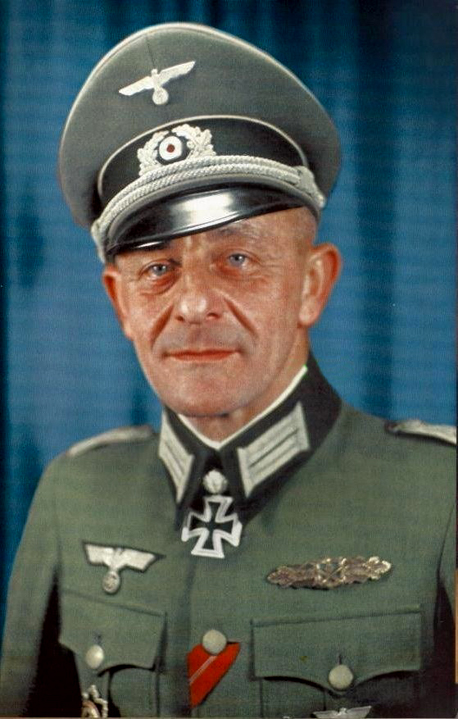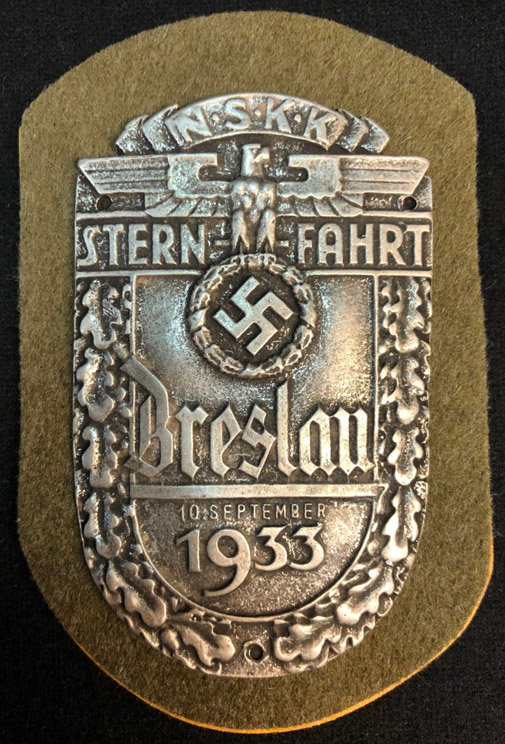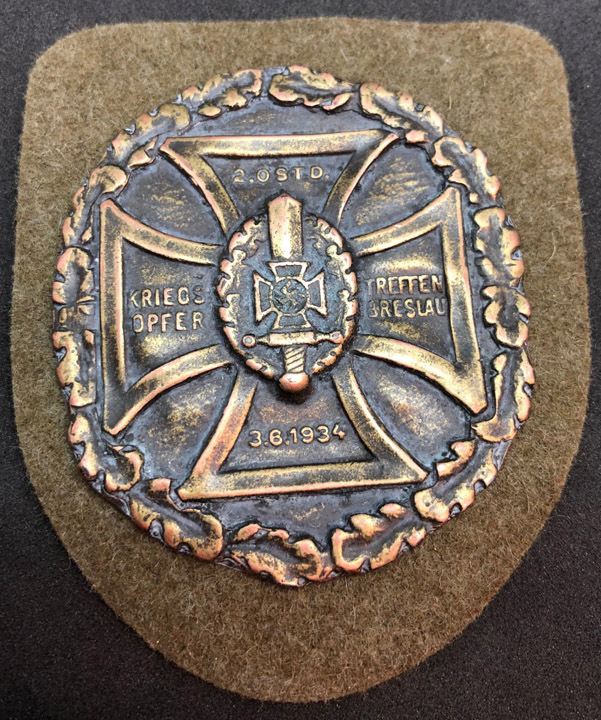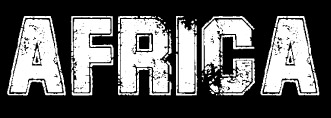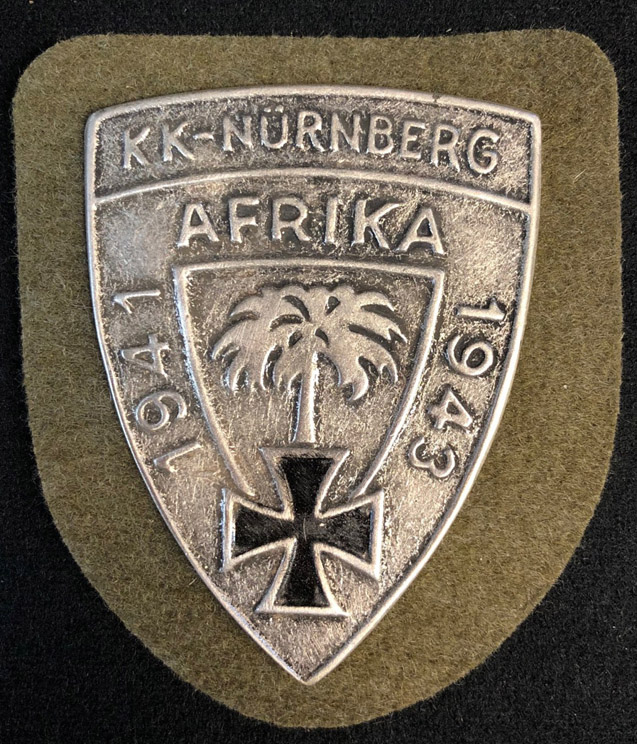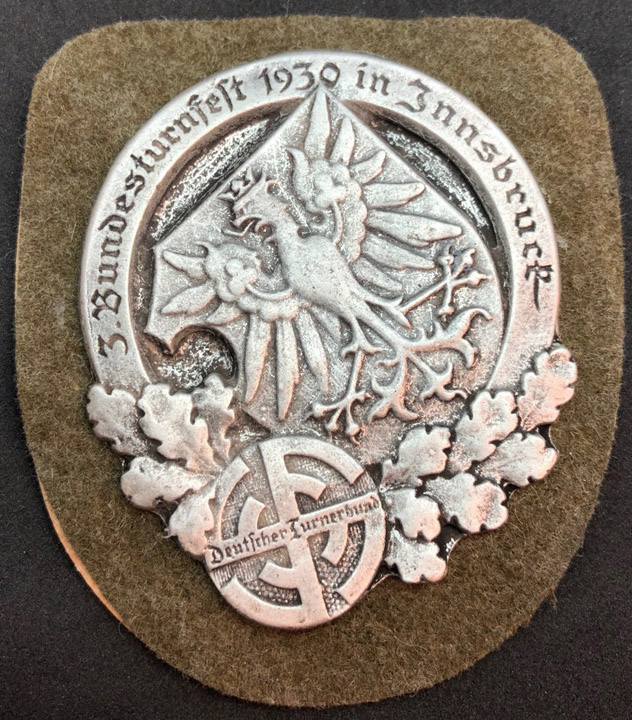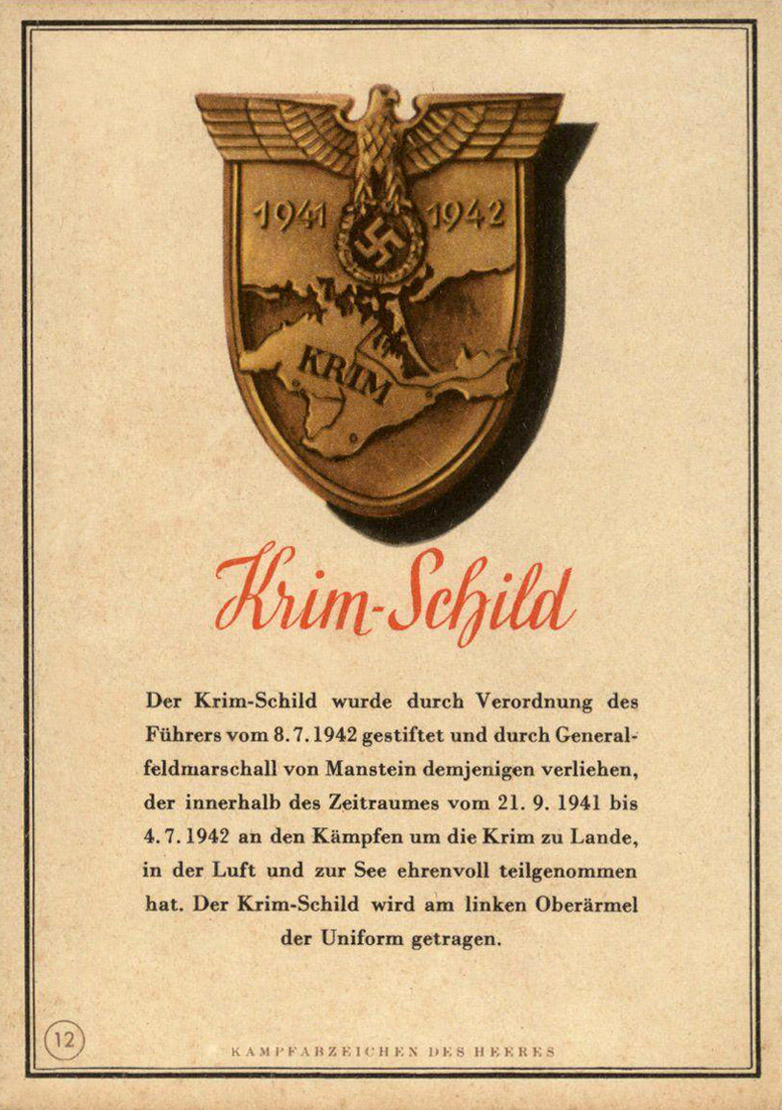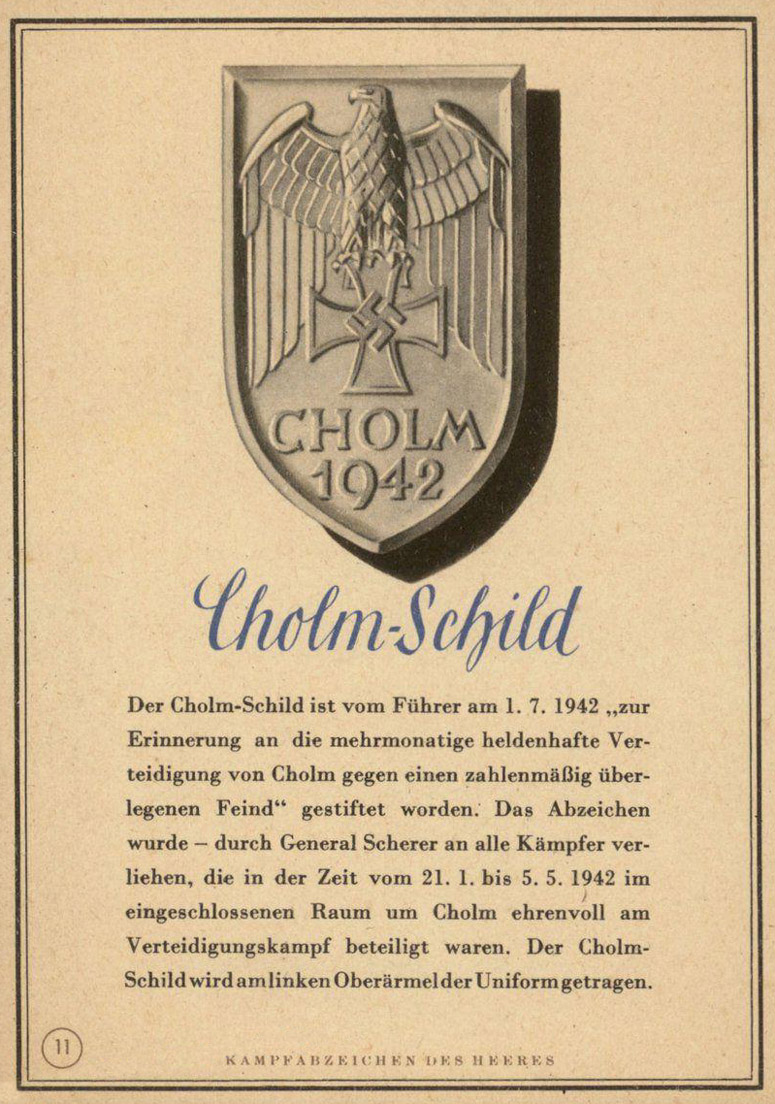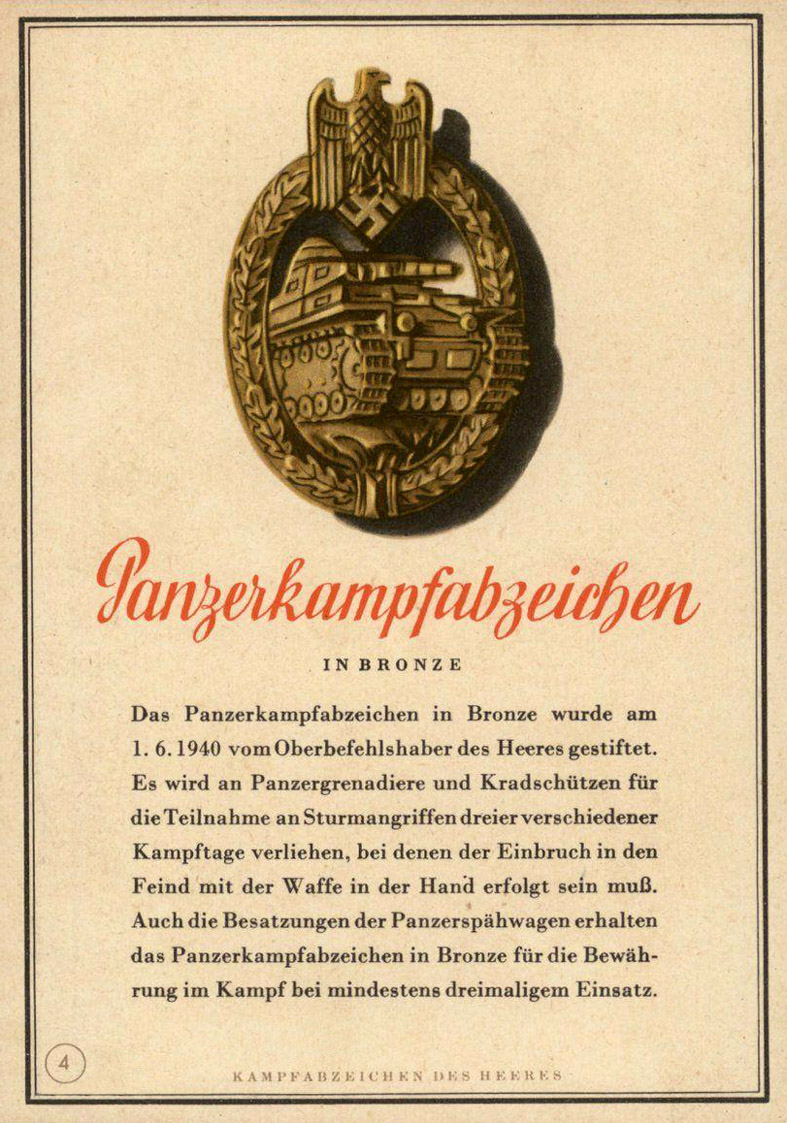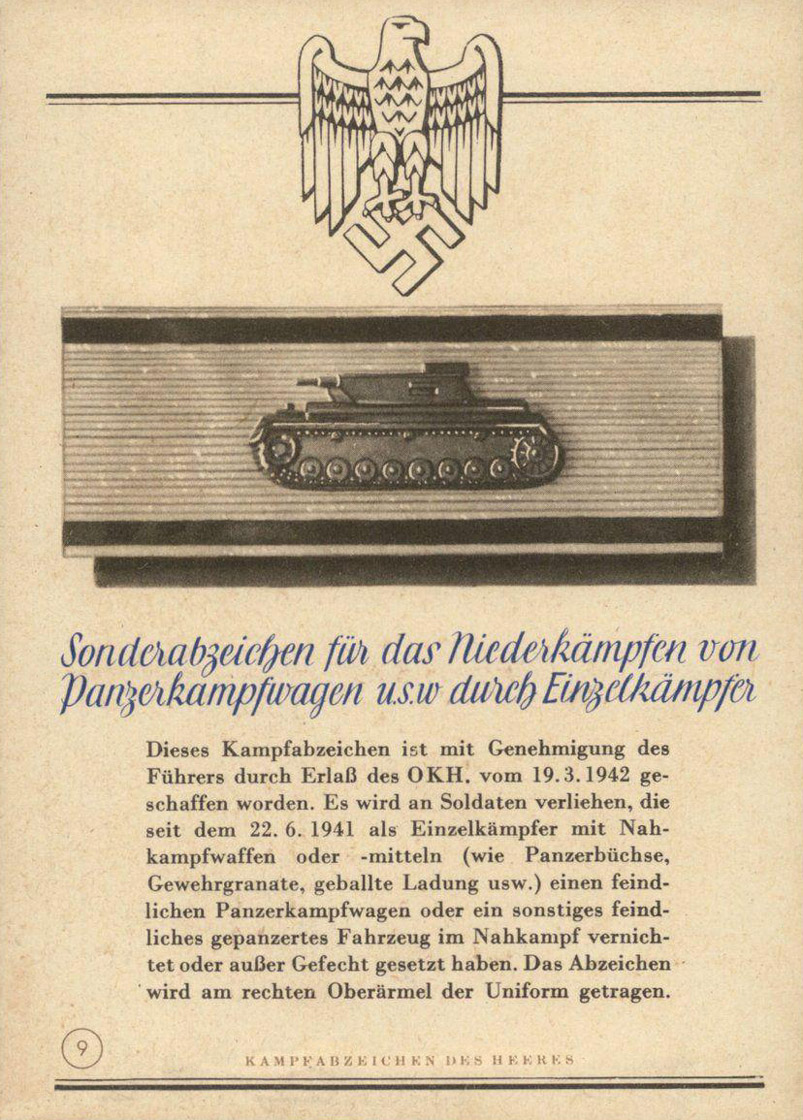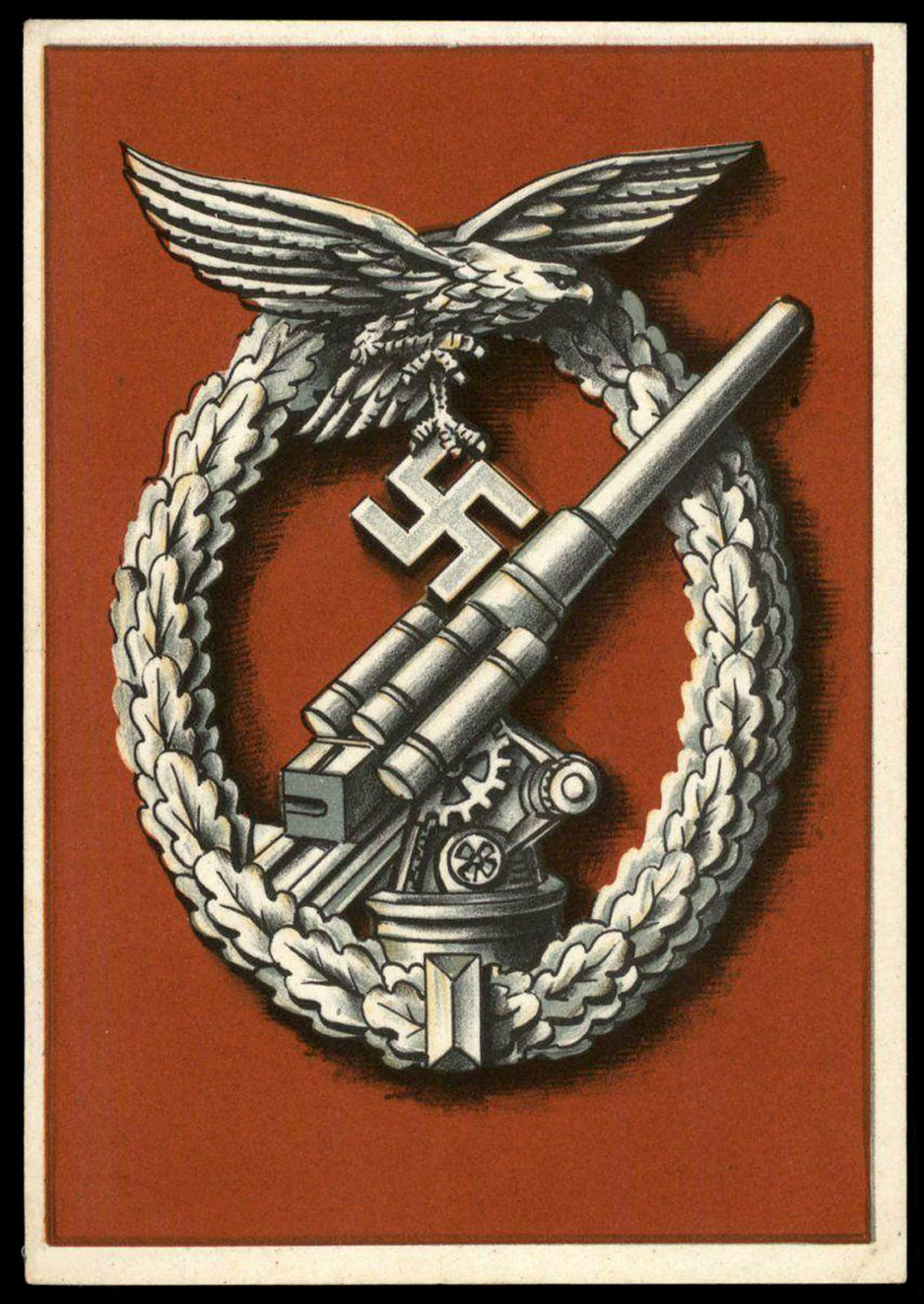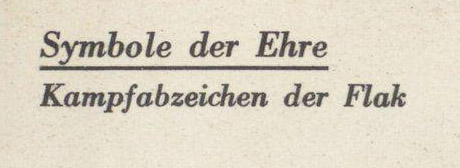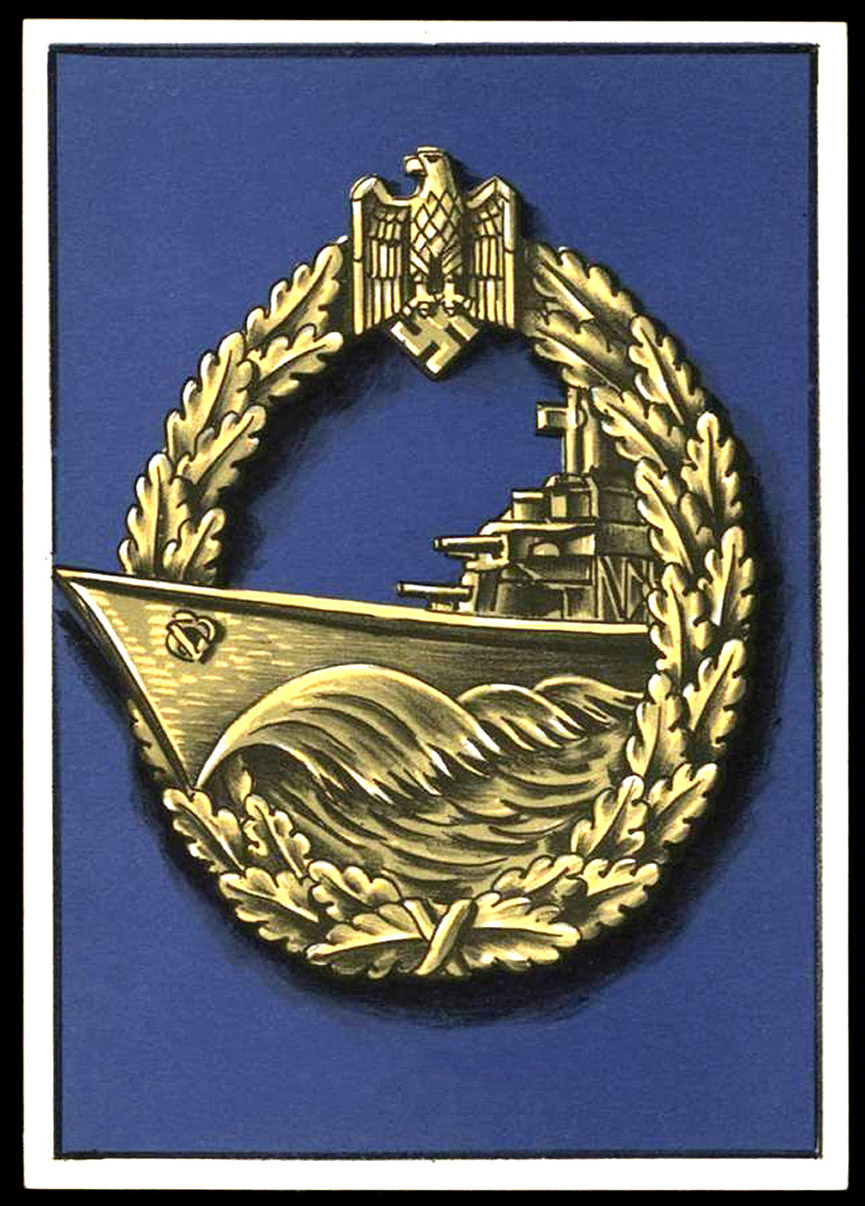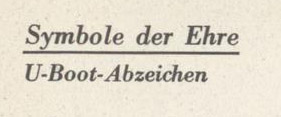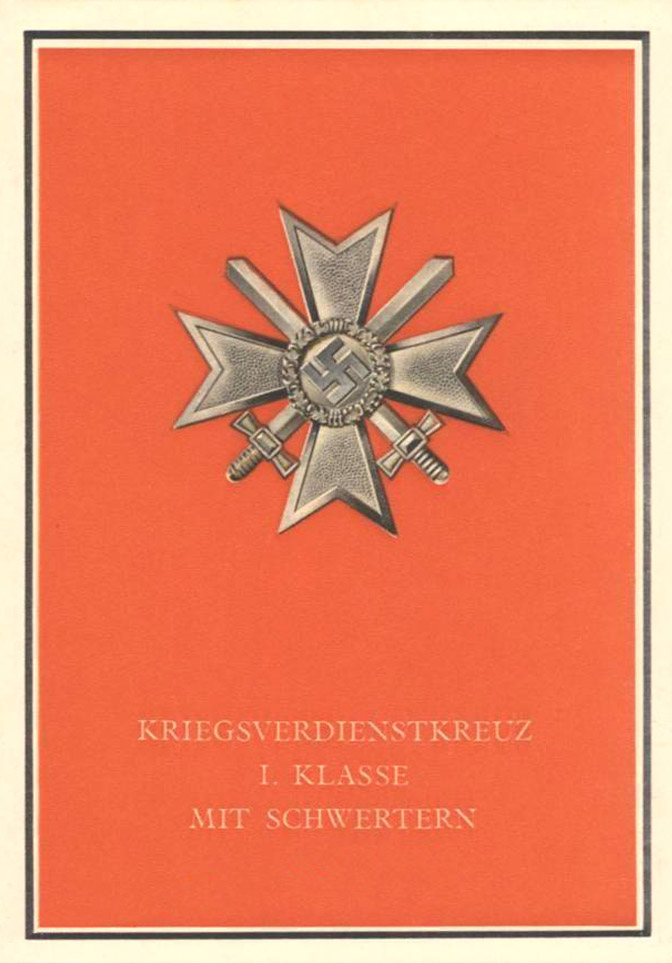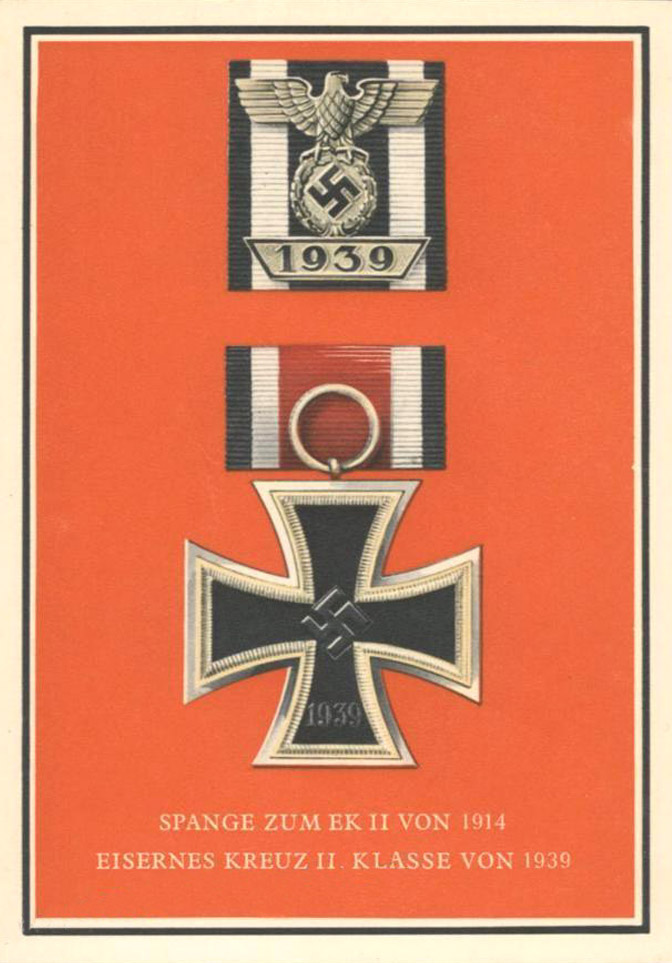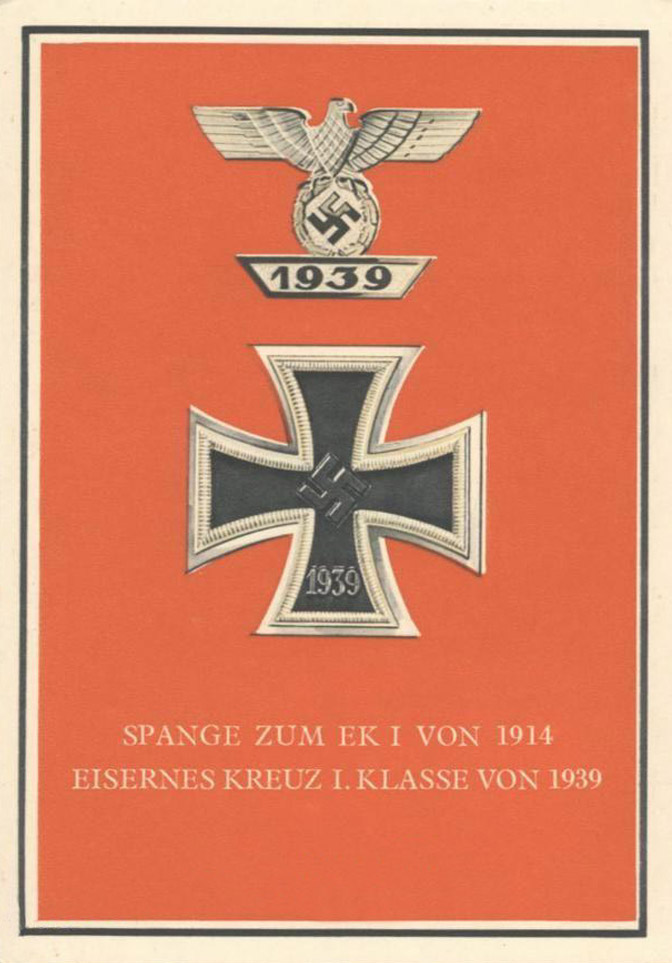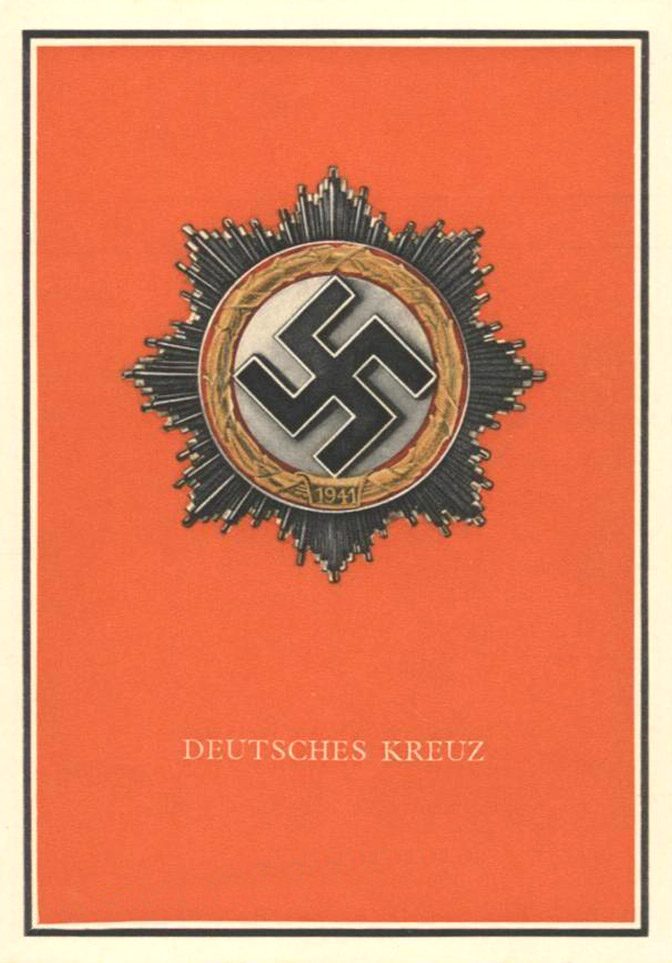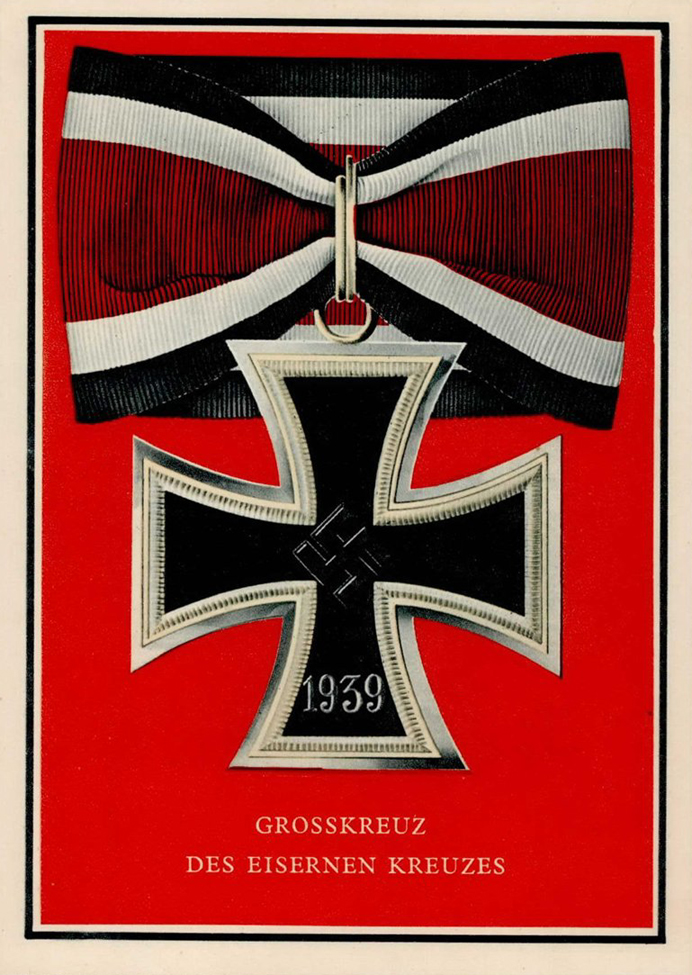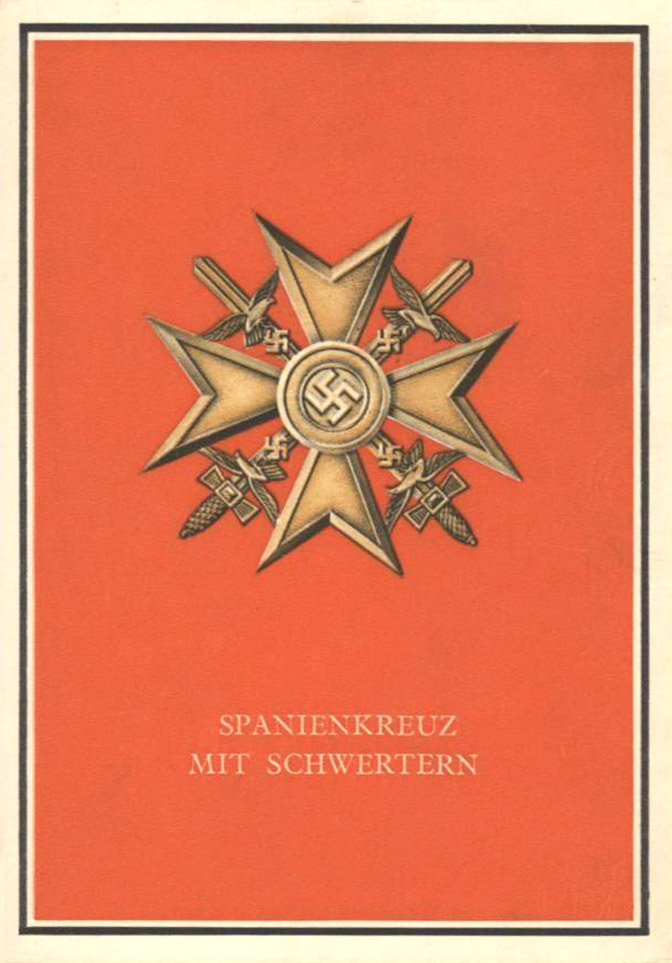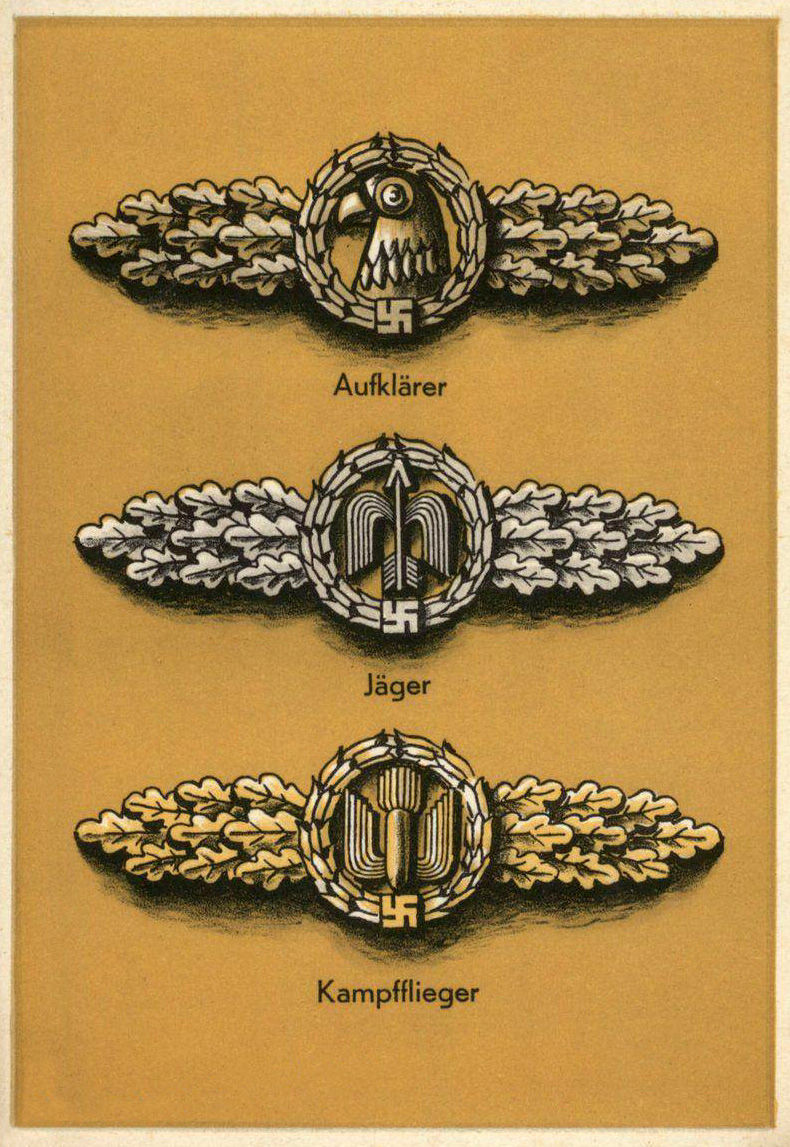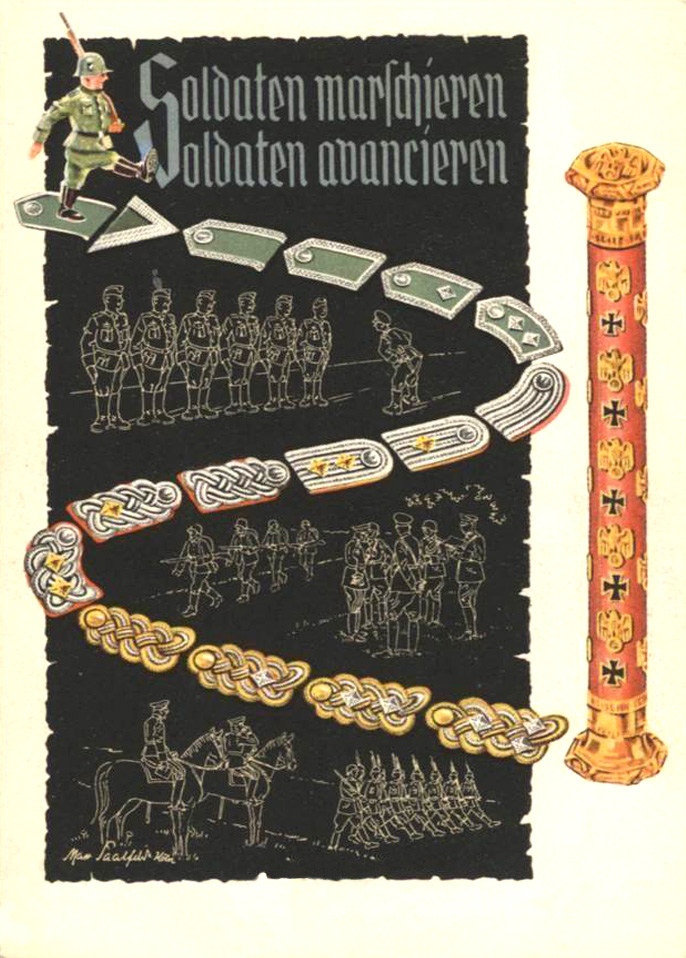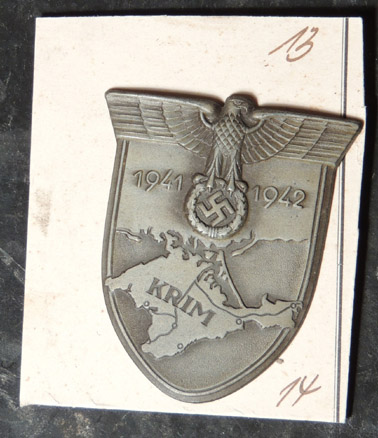[Below: The Narvik Campaign Shield was awarded to soldiers, sailors and aviators who participated in the Narvik campaign in Norway from April 9 - June 9, 1940. The shield was worn on the upper left sleeve.
The award was received by 8,577 personnel, including those killed in the campaign.]
[Below: Here is a Narvik Campaign Shield on a rare 'salesman' sample hard cardboard backing. This example is missing all of its finish, revealing the zinc alloy beneath. Click to enlarge.]
[Below: The Crimea Campain Shield was awarded to German soldiers, sailors and aviators who participated in the Crimean campaign between Sept. 21, 1941 and July 4, 1942. The shield was authorized by Field Marshal Erich von Manstein who was the commander of the German troops involved. The qualification requirement stipulated at least three months service in the area, although it could be less if the person was wounded or served in a major battle. The shield was worn on the upper left sleeve.]
[Below: Field Marshal Erich von Manstein, 1938]
[Below: Here is a Krim Campaign Shield on a rare 'salesman' sample hard cardboard backing. Click to enlarge.]
[Below: The Cholm Campaign Shield was awarded to members of the German forces that were surrounded by the Soviet Army for 105 days at the small town of Cholm. Around 5,500 men under the command of Generalmajor Theodor Scherer held out against vicious Soviet attacks while being resupplied by air, from December 1941 to May 1942, before finally being relieved. Only 1,200 bloodied men survived the terrible siege. The shield was worn on the upper left sleeve.]
[Below: Generalmajor Theodor Scherer]
[Below: The Demjansk Campaign Shield was awarded to members of the German force that defended the small Russian village of Demjansk for 14 months, from February 1941 to April 1942. Approximately 100,000 of the shields were awarded. The qualification requirement stipulated at least 60 days service in the area, although it could be less if the person was wounded or served in a major battle. The shield was worn on the upper left sleeve.]
[Below: Field Marshal Ernst Busch]
[Below: On October 2nd, 1942, during the battle for Stalingrad, Adolf Hitler ordered the creation of a campaign shield honoring the men fighting there. Several designs were eventually made. The first was from artist Ernst Eigener, from Propagandakompanie 637, and featured a German soldier lying dead, with a crown of barbed wire around his helmet, in front of the grain elevators where violent conflict had taken place. This first version was rejected (and rightfully so) as being too depressing. The artist Eigener was later killed in the battle of Stalingrad on November 20, 1942.
[Below: Original sketch is shown on the left]
A second version was drawn up and submitted by Feldmarschall
Friedrich von Paulus which eliminated the dead soldier and substituted the Volga River. Due to the treachery of Feldmarshall von Paulus surrending it was never produced. He surrendered his 94,000 men into Soviet death camps, of which only 5,000 would ever return home.
[Below: Slightly different version]
The Stalingrad shield shown here is a fantasy, made up to fool collectors. It was first produced of rusty metal in England in 1979, although since then there have been other copies done in various metals, as shown here.]
[Below: More recent copy of fantasy shield]
[Below: This is the shoulder board device made to honor the division destroyed at Stalingrad. This design was the inspiration for the above fantasy campaign shield.]
[Below: The Warsaw Campaign Shield was authorized on December 10th, 1944, but like the Stalingrad Campaign Shield, was never manufactured or awarded. This was due because the production dies were destroyed in a bombing raid. It is reported that the badge went into production for a short time, however. But no pictures of the badges or badges themselves have yet surfaced.
The Warsaw Campaign Shield was to be awarded to members of the Wehrmacht and auxiliary forces who fought against the communist led rebellion in Warsaw starting August 1, 1944 (63-day 'Warsaw Uprising'). Like all German battle shields this was to be worn on the upper left sleeve. The design of the badge was done by artists Benno von Arent.
[Below: Original sketches]
[Below: There are many replicas of the Warsaw Shield and it is nearly impossible to authenticate them since no clear original copy has surfaced.]
[Below: Benno von Arent.]
[Below: The Lorient Campaign Shield was designed and produced locally by German soldiers and sailors in the port city of Lorient in Brittany, France. This vital port and submarine base held approximately 26,000 men of all branches of the Wehrmacht were united under the command of General Fahembacher. These men were surrounded after the Allied invasion of Europe, but valiantly held out, the Allies unable to defeat them. In fact, these men held out until the end of the war.
Sometime toward the end of 1944 General Fahembacher authorized the Lorient Campaign Shield, therefore it was only locally authorized. However, in the 1970s the General denied any knowledge of the decoration! Today there are many who say it was authorized and produced, and those who disagree and say it is a fantasy, or at least was never produced. We may never know.
There is a variant of the stamped metal design, it is made from a modified German identity disk. Where the identification numbers should be, instead are the words 'FESTUNG LORIENT' (Lorient Fortress). This crude disc is thought to have been a preliminary award, before the official one could be presented.]
[Below: Again, there are many fakes of these shields, beware.]
[Below: The Balkan Campaign Shield was was presented for approval to Adolf Hitler in January 1945, but it never moved past the design phase. It was to be awarded to the soldiers who were holding back the Bolshevik horde in the Balkans.
It is debated whether or not this shield was indeed awarded. It is said that SS Obersharführer Fredrich Olesh (from the Prinz Eugen division) told the author Mr. Aisby (World War II German Medals) that he personally awarded approximately 250 Balkans shields.
The design was done by artist Benno von Arent, who designed other shields, on March 7, 1945.
[Below: A modern copy.]
[Below: Benno von Arent.]
[Below: The Lappland Campaign Shield was awarded to German soldiers, sailors and aviators of the 20th Gebirgs-Armee under General Franz Böhme, who took part in the campaign against the Finns in the far north Finnish province of Lappland, between September of 1944 and April of 1945. The shield was
instituted around February-March 1945, the final shield to be officially awarded by the German high command. None are believed to ever have been 'officially' awarded. The ones found in several pictures, as seen below, are believed to be field-made shields.]
[Below: General Franz Böhme]
[Below: The Kuban Campaign Shield was awarded to German soldiers, sailors and aviators who took part in a number of defensive battles during the retreat from southern Russia in 1943. To qualify for this award you must have had at least 60 days service in the area, although it could be less if you were wounded or served in a major battle.]
[Below: Note this soldier wears BOTH the Kuban AND Krim shields!]
[Below: The Arnheim Campaign Shield is rumored to have been a proposed design for an award for the German defenders during the famous Operation Market Garden campaign in Holland in September, 1944. The shield, for whatever reason, was never awarded.]
[Below: Fantasy piece]
[Below: The Dunkirk Campaign Shield was only locally authorized and very little is known about this shield. Like the Lorient garrison, the men of the Dunkirk Garrison, held out until the surrender of Germany, despite being surrounded and completely cut off. The shield was introduced by Vizeadmiral Friedrich Frisius in January or February 1945.
It would appear that a few examples were indeed awarded, as there are a few examples of soldier pay books with entries referencing it. It is believed only 50 were awarded.
The port city of Dunkirk was surrounded after the Allied invasion of Europe. It held an army of 15,000 men. Although completely cut off from the outside, these valiant men not only held out until the end of the war, but managed to viciously counterattack their enemies, catching them by complete surprise.
[Below: Vizeadmiral Friedrich Frisius]
[Below: The Budapest Campaign Shield was created 'on paper' by Domonkos Laszlo at the request of Lt. Col Varihazy. Although plans were made to produce the shield, none were made.]
[Below: Shield mock-up]
[Below: Fantasy piece]
[Below: Fantasy piece. This is a complete fantasy and was never contemplated. It's interesting that 'Gross Britanien' is spelled wrong here. It should be 'Großbritannien'...]
[Below: Fantasy piece. This is a complete fantasy and was never contemplated.]
[Below: The Memel shield existed only on paper, with no evidence that it was ever produced. The shield might have
been instituted by Generalleutnant Dr. Karl Mauss,
commander of the 7th Panzer Division, in the winter of 1944-45.
Authors have drew up the design, however (as seen below). Interestingly, someone was inspired by one of author Robin Lumsden's 1987 drawings and produced a shield in lead (seen below on the far right). The image is taken from a 1446 seal and shows the Memel city arms and depicts Memel harbor.]
[Below: Generalleutnant Dr. Karl Mauss]
[Below: This is another fantasy. There are many versions of these online, made from various materials -- copper, zinc, bronze -- and all of them are very cheap looking...]
[Below: Another Breslau fantasy...]
[Below: And another fantasy...]
[Below: And another fantasy...]
_________________________________________________________________________
[Below: Period postcard explaining the Krim Shield. This postcard was part of a series of other shields and medals.]
[Below: Period postcard explaining the Cholm Shield. This postcard was part of a series of other shields and medals.]
[Below: Text from postcard reverse.]
It says:
'Jedes Kampfabzeichen des Heeres weist seinen Träger als besonders bewährten
Frontkämpfer aus. Führer und Vorbild dabei ist hier wie immer der deutsche Offizier. Willst Du,
deutscher Junge, Offizier des Heeres werden, so bewirb Dich bei der nächsten "Annahmestelle für
Offizierbewerber des Heeres".'
Which means:
'Every combat badge of the army identifies its wearer as a particularly tried and tested front-line fighter. As always, the German officer is the leader and role model. If you, German boy, want to become an army officer, apply to the next "Admission Office for Army Officer Applicants".'
[Below: Another postcard in the set explaining the Panzer Tank Assault Badge.]
[Below: Another postcard in the set explaining the Tank Destruction Badge.]
_________________________________________________________________________
[Below: Period postcard explaining the 'Kampfabzeichen der Flak' (Flak Combat Badge). This series of postcards were released by the Winterhilfswerk (Winter Relief) program for the 'Tag der Wehrmacht' (Day of the Army), March 22-23, 1941.]
[Below: Postcard reverse - 'Symbole der Ehre' (Symbol of Honor).]
[Below: Period postcard explaining the 'Zerstörer-Kriegsabzeichen' (Destroyer Combat Badge). This series of postcards were released by the Winterhilfswerk (Winter Relief) program for the 'Tag der Wehrmacht' (Day of the Army), March 22-23, 1941.]
[Below: Postcard reverse - 'Symbole der Ehre' (Symbol of Honor).]
[Below: Period postcard explaining the 'U-Boot-Abzeichen' (Submarine Badge). This series of postcards were released by the Winterhilfswerk (Winter Relief) program for the 'Tag der Wehrmacht' (Day of the Army), March 22-23, 1941.]
[Below: Postcard reverse - 'Symbole der Ehre' (Symbol of Honor).]
[Below: Period postcard showing the 'Kriegsverdienstkreuz I. Klasse mit Schwertern' (War Merit Cross 1st Class with Swords).]
[Below: Postcard reverse.]
[Below: Period postcard showing the 'Spange zum EK II von 1914 -
Eisernes Kreuz II. Klasse von 1939' (Clasp for Iron Cross 2nd Class from 1914 - Iron Cross 2nd Class from 1939).]
[Below: Period postcard showing the 'Spange zum EK I von 1914 -
Eisernes Kreuz I. Klasse von 1939' (Clasp for Iron Cross 1st Class from 1914 - Iron Cross 1st Class from 1939).]
[Below: Postcard reverse]
[Below: Period postcard showing the 'Deutsches Kreuz' (German Cross).]
[Below: Postcard reverse]
[Below: Period postcard showing the 'Ritterkreuz des Kriegsverdienstkreuzes mit Schwertern' (Knight's Cross of the War Merit Cross with Swords).]
[Below: Postcard reverse]
[Below: Period postcard showing the 'Grosskreuz Des Eisernen Kruezes' (Grand Cross of the Iron Cross (Knight's Cross).]
[Below: Period postcard showing the 'Spanienkreuz mit Schwertern' (Spanish Cross with Swords).]
[Below: This war winter charities donation postcard shows Luftwaffe Frontflugspangen (Luftwaffe Flight Clasps).]
[Below: Here is a neat postcard showing the various shoulder boards showing ranks all the way up the field marshal.]

